Rashad Jennings – Workout 1 Jump Cuts






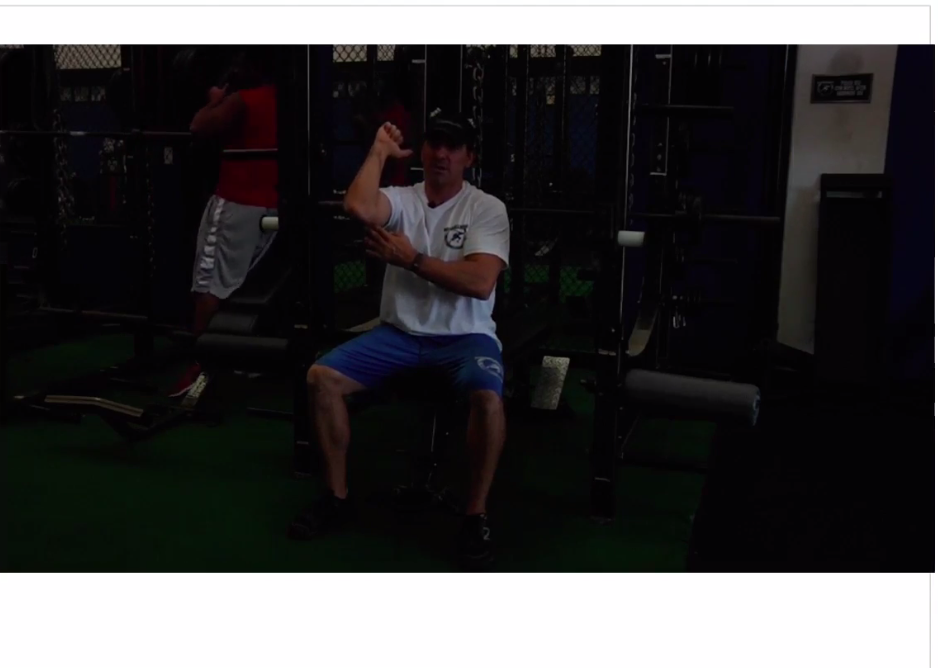
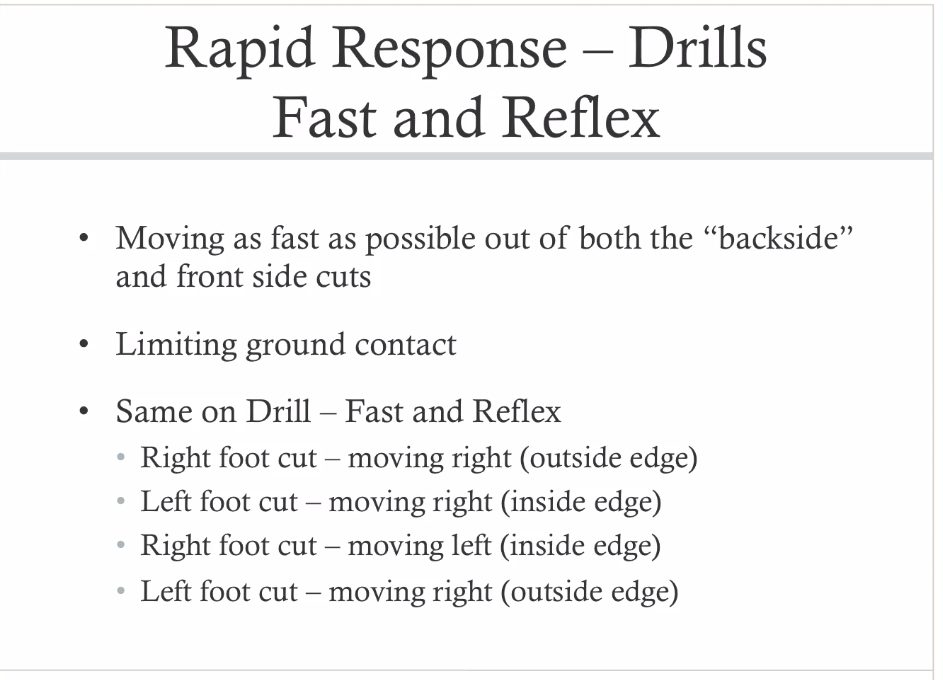

http://s3.amazonaws.com/kajabi-panda-production/c451432c7c80cf046abb7a4570beea82.mp4?AWSAccessKeyId=AKIAJQJ7TPUNH4FUNP6A&Expires=1450929578&Signature=4DBh94IhIg%2BYssSNhB1DOSsts0Q%3D
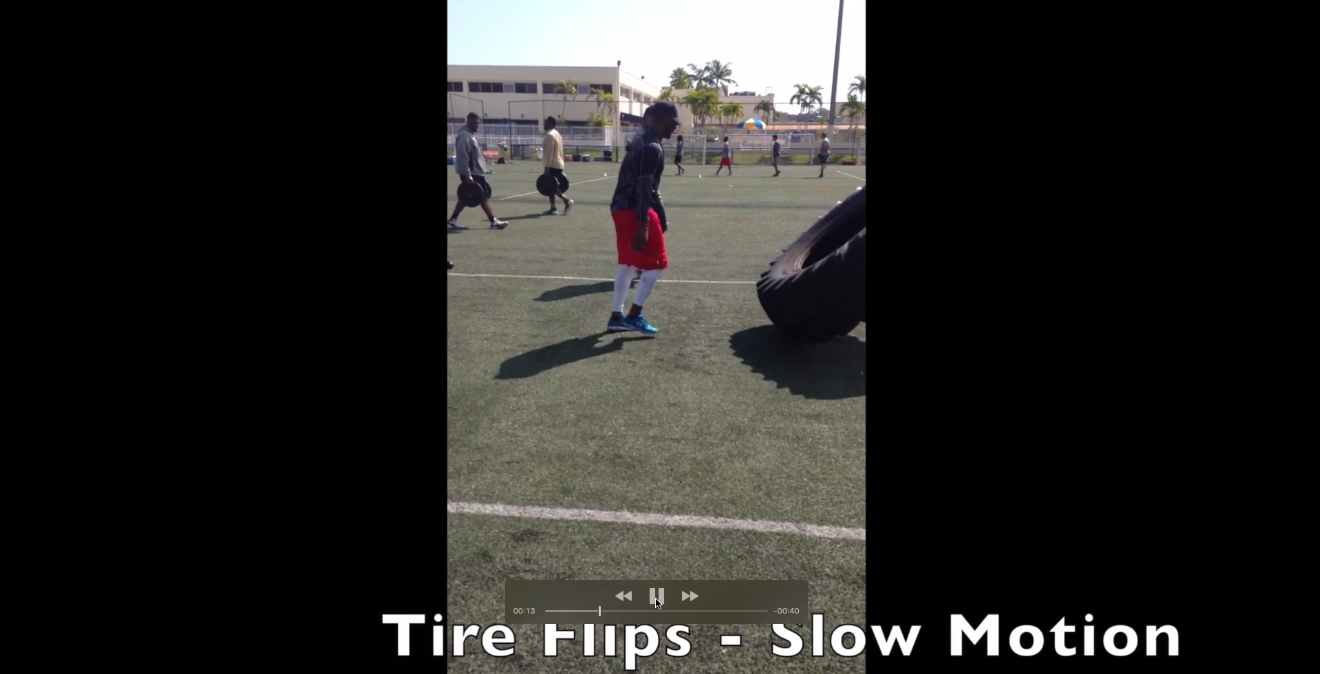
In this section you will see the Science/Concepts/Overview of certain Lifts/Pulls related to Vertical Power:
In this video you will see the continuation of the Exercise Database of this Preparation Series:
In this video you will see the continuation of the Exercise Database of this Preparation Series:
In this video you will see the scientific concepts & the goals of this Preparation Series:
Exercise Database of this Preparation Series (Science and Demonstrations):

6-WEEK MASS HYPERTROPHY UNDULATING
Pete Bommarito, MS, CSCS, USAW, MATCS
Owner/President, Bommarito Performance Systems
Owner/President, Bommarito University
Maximizing muscle growth is obviously an extremely important concept for all different types of athletes and fitness enthusiasts. There is tons of data and research that shows different types of programs, and the hormonal response associated with each. The key is to implement the research into application – but with programs that can be safely and intelligently performed that gets the desired results without running the risk of overuse injuries. Separating a person’s goals into 2 main categories is important – the general population and athletes. The benefit of this undulating program is it can be performed and be extremely beneficial to all types of general population and all athletes at various levels.
[table id=1 responsive=scroll responsive_breakpoint=phone /]
As always the exercises in this program can be referenced in the BPSU Exercise Database. Make sure you give us feedback and questions in our Forum as you go through this program!
General Population
In the general population not necessarily focusing on an athletic event, it can be purely health related and for aesthetic purposes. Maximizing hypertrophy can lead to a number of health benefits – including but not limited to joint health, structural alignment, bone health, and accelerating fat loss for overall better function.
In terms of aesthetic purposes, males typically want to build as much muscle as possible with being as lean as possible. This program will help to accomplish both. The hormonal response for males is much greater than females, so a male can expect an overall muscle growth that is greater. Keep in mind that even if a male’s ultimate goal is to get “as lean as possible without getting bigger”, this program will still work. The more muscle mass, the higher the metabolic function, which will lead to overall fat loss to be accelerated. Keeping with this same hormonal concept, women should definitely NOT be scared off from an intensive program such as this. For a woman to maximize their genetic potential for muscle growth, doesn’t necessarily mean that they will “get bigger”. The “toning and definition” that I hear women talk about when discussing overall goals of a fitness program WILL BE accomplished with this type of program. Remember that a women’s overall hormonal response is just different than males. Meaning an intensive hypertrophy program will stimulate muscle growth so the muscle can actually be seen more prominently – hence, the “toning and definition” they crave. Couple this concept with the increase in metabolism and thus accelerating fat loss – and women can definitely accomplish their goals – mainly maintain weight but lose fat and gain the toning; OR even lose weight but still have that lean and defined look.
Athletes
The other positive about an intensive program such as this is that it can be used for all athletes, without compromising their overall goals of being explosive. Even an athlete such as a body builder, model, or fitness competitor can benefit tremendously with this type of an undulating model. Many times if an athlete like a body builder is trying to build as much muscle as possible, they get locked into high volume, longer tempos (speed of repetition), and short rest periods. Which is fine, because that is what the research tends to dictate. However, there is nothing wrong with occasionally shifting towards to neural component of maximum effort work and maximizing motor unit recruitment. In a sense, “getting stronger” from implementation of max effort work into a microcycle like this, will allow for greater loads to be placed on the actual “volume days”. If the volume days can be accomplished with these great loads because the athlete is actually stronger, the hormonal response can be elevated with these days – hence more muscle growth.
For traditional sport athletes, this undulating model is a phenomenal method to maximize size and strength, without compromising speed and power. The old way of thinking of “if you train slow you will be slow” can be interpreted in many ways. Hitting an aggressive 6-week microcycle like this to elicit as much muscle growth as possible will definitely not compromise the overall expression of power – especially when you think about how many other microcycles can be placed into an off-season that focuses on power and power endurance. Shifting the focus onto muscle growth for a short 6-week microcycle can really set a great base of size and various types of strength and strength endurance. This base can lead to more efficiency when the focus shifts over to a microcycle that focuses more on maximizing power. This is especially true when you consider the undulating model – note that there is still dynamic and explosive work strategically placed throughout the cycle.
Recovery
This could be the most important factor in the overall success of this model. Note that there are recovery days and off days placed into the workout. Because of the extreme time-under-tension on some of the heavy volume days, recovery is extremely important to allow the muscles AND the nervous system to adequately recover. This single biggest mistake made when attempting a cycle focusing on hypertrophy is that recovery days are limited or eliminated.
Recovery days doesn’t mean that the training stops, or lighter loads/intensities are even implemented. It’s just more of a focus on single joint work, lower overall volume, and controlled, focused tempos. This is necessary not only to allow recovery – but also (and probably more importantly) to keep the structural balance of each joint. This structural integrity will actually allow for more success during the heavier or higher volume days focusing on multi-joint lifts. Think of it in these terms: A multi-joint press will involve elbow extension. A multi-joint pull will involve elbow flexion. A multi-joint squat or single leg squat will involve knee extension and hip extension. It’s always beneficial to ensure that the individual segments are a strong as possible to allow for more overall efficiency (and less compensation for weaker segments).
Undulating Methodology
The overall model of “undulating” is really dominating the research. Meaning that each week doesn’t have a particular focus – each day of each week consistently switches the focus. This allows for an efficient rotating shift between neural (max effort), cellular (volume), combination (more time under tension with maximal weights), and recovery (segmental strength). Even “dynamic” or power based themes are placed into the rotation.
The research consistently dictates that in order to optimize the neural recruitment on a max effort day, hitting this type of workout every 10 days is necessary. Research also dictates that a high time-under-tension (longer, slower repetitions) coupled with shorter rest periods will optimize the hormonal response for muscle growth. Note that some days, a particular muscle group is the focus with this exact concept implemented – this is greatly exemplified in weeks 2 and 4. Some days, a complex (or superset) is implemented – usually in the form of a variation of GVT (or “German Volume Training”) model. These GVT days can be with volume (example week 1, day 1); max effort work with higher tempos (example week 3, day 5; or week 6, day 1); or even complexing single joint and multi-joint lifts for overall volume (example week 2, days 3 and 6). This type of consistent rotation of cellular (volume) and neural (strength) components will help maximize ALL expressions of hormonal response – which can allow for greater recovery, but ALSO greater overall muscle stimulus
Workouts
As with all BPS programs, the when writing with a “1” immediately followed by a “2”, this is an immediate complex (or superset). Taking week 1, day 1 as an example:
The “1” exercise Bench/Board Press with a 40X tempo with 10×10 volume. The “2” exercise below it is Pullups – WAG (wide angled grip) – also with a 40X tempo and 10×10 volume. Note there is not RI (rest interval) for the Bench/Board Press, but there is a 60 second rest interval for the Pullups. This means that a set of 10 (40X tempo) of Bench/Board Press will be performed; then IMMEDIATELY perform the Pullups (40X tempo) for a set of 10. Then rest 60 seconds. Then repeat that exact sequence for 10 total sets.
The Setup illustrates the overall periodization of the 6-week cycle. Note that each day of each week will have the muscle group focus along with the theme. The Theme of each day is also listed at the top of each day within the actual workout.
Implementation of Speed/Movement Work and/or Cardio Work
Each person is going to respond differently to this aggressive type of loading – so general rule of thumb is to listen to the body, and DON’T push through extreme fatigue and soreness. In terms of other general rules to follow
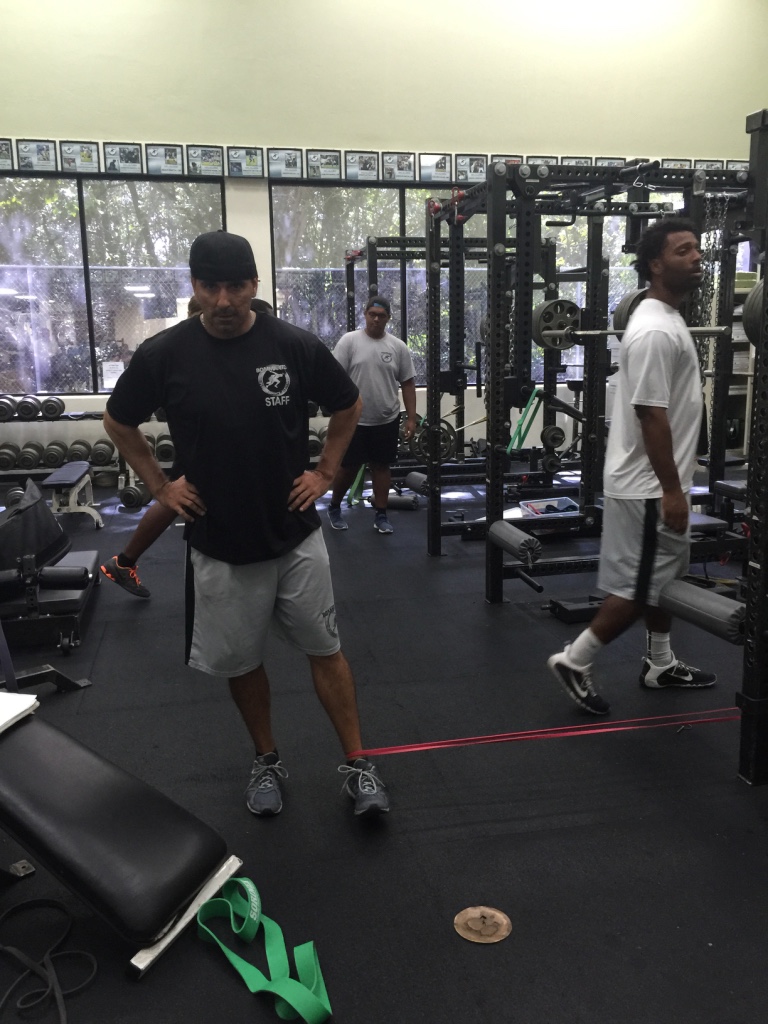
MAXIMIZING YOUR WORKOUTS ON THE ROAD OR AT HOME WITH LIMITED TIME/EQUIPMENT – THE VARIABLE LOADING AND BODY WEIGHT SYSTEM
Pete Bommarito, MS, CSCS, USAW, MATCS, MAT Jumpstart
In order to really maximize your training for yourself and/or your clients, having the structure is always the key. The optimal structure can be centered around a number of aspects:
It is clear that one or more of the aforementioned aspects are just common parts of most people’s everyday lives and they will always compromise “optimal development.” This is especially true for those that travel frequently, or just simply for those clients that have so many personal responsibilities with family and/or young kids that it might be logistically impossible to get to a facility with the necessary amenities and equipment. Planning for these logistical factors is always a good idea; as some development (even if it is “sub-optimal”) can be better then no development at all. As long as trainers/coaches and the clients have a full understanding that this can’t be setup as a standard for people that are just too lazy to commit to what is optimal at least part time. It is simply great sample general plans that can keep the development going during these types of tough situations.
From an athletic perspective, tennis is a great example. There is no way that an elite tennis player can have a perfect plan on the road to different countries and absolutely ensure that there is a facility in close proximity that has all of the adequate equipment and services. Further, there is always a financial factor – some players can surely bring a “travel performance coach” on the road; some can’t. In either case, the coach MUST plan for implementing a program when traveling with the client; OR give the client solid education and a program to take on the road. And this implementation must be planned for a “worst case” scenario.
From a general fitness perspective, the best trainers are not just the ones that can directly train a client adequately. It’s the education of what to do in a “worst case” scenario if your client needs to travel, has an emergency, or has a logistical issue like family issues that inhibits the ability to attend sessions.
In any of the above scenarios, body weight training and band training is a great place to start. There are many different modes of training, but body weight and bands can usually be the best system to implement because of the ease of implementation with no “facility”. It’s easy to travel with, it’s inexpensive, and the overall variety of exercise implementation can really facilitate a solid, scientifically based program.
EQUIPMENT
Sorinex Bands – Mini, Monster-Mini, Light, Medium, Heavy
EXERCISE DATABASE
Upper Press
Staggered Stance SA Band
Rotate SA Band Punch
Variations
Upper Pull
Angled Stance SA Row
Reverse Band Fly
Variations
Upper Auxiliary
Band OH Tricep Press
Variations
Band Side Shoulder Raise
Band Rear Shoulder Raise
Variations
Lower Hip/Quad Dominant
Band Bulgarian Squat
Variations
Lower Posterior Chain
Lower Single Joint
Band Hip Extension
Band Hip Abduction
Band Hip Adduction
Variations
External Rotate feet
Neutral feet
WORKOUTS
Using the listed workout scripts as general templates, it can be easy to construct an undulating periodization model. This model should always be with the understanding that it should be unplanned. This is especially true for athletes on the road. If an athlete is on the road with heavy tournament play, the training should supplement practice and match play – not interfere with it. It’s virtually impossible to perfectly plan the recovery from practice or an event. The basic way to plan a workout script is to go off the “readiness to train” of an athlete. Simply how the athlete feels, soreness levels, energy levels, etc. For advanced athletes with a better understanding of their body, or if athletes have access to Neuromuscular Therapists, it becomes a lot more detailed in terms of the actual appropriateness of the workout selection based on neural capacity and function.
Note that each workout has 2 complexes. The “1” exercise is always immediately super-setted with the “2” exercise, then given rest period will take place (noted by “RI”, or rest interval, on the script). The rest period can be a simple inactive recovery. Or there can be a chosen “Corrective Exercise” chosen during the rest interval. There are many sample corrective exercises listed on the script. For example, on the MAX EFFORT scripts, a Double Leg Standing Calf Raise is listed as a sample exercise during the rest interval of the first complex. Because the muscles involved in plantar flexion are such a crucial component of the gait pattern (especially from the complex an specific pronate to supinate action from absorbing to re-directing force), it can be a great chosen exercise during this rest interval that can assist with “correcting” dysfunctional gate patterns (of walking, or dynamic motion and changes of direction). Note the progressive overload between the levels. If there is a specific inhibition that got activation from a therapist, a specific isolated exercise can be used to facilitate a progressive tolerance to force at that joint/muscle. If there is no set pattern of specific evaluations, the listed exercises can be great choices – because they are globally seen as assisting with many general dysfunctions seen in many people – athletes and general fitness clients.
For simplicity purposes, all of the listed workout scripts were constructed with “full body” on each day. However, if there is a week where it is appropriate (based on response) that 3 or 4 days can be used, an upper body or lower body day can implemented using the same model. So if an upper body day needs to be substituted for a full body day that is listed, both complexes can have a “1. Push to 2. Pull” system, with a rest interval that contains a corrective.
Also note that some of the Rest Intervals contain “Complex” instead of a corrective. An example would be the VOLUME day. Instead of focusing on an exercise assisting with the force at a specific or a general dysfunction, this is an exercise that completes the overall complex. Hence, the VOLUME day is an intense continuous workout with little to no rest.
As with anything in Sports Performance or General Fitness, it’s still a good idea to plan based on the predicted response – but always CHANGE THE PLAN based on the actual response. With these points in mind, these examples could be appropriate periodization models for an elite athlete on the road, or a general fitness client that needs a good “home workout” for a period of time:
ELITE FOOTBALL OFF-SEASON STRENGTH PROGRAM
Pete Bommarito, MS, CSCS, USAW, MATCS, MAT Jumpstart
Elite status in football can be categorized as any fully-grown elite high school player that has years of strength training experience, a collegiate player, or a professional player. While this program was designed specifically for Lineman, it has been also utilized for skill players needing to add muscle, strength, or a combination of both. It is one of the more aggressive programs designed in terms of overall volume and a progressive intensity with variable loading and speed strength development. It is also very sport and position specific, especially at positions like Lineman that hit on every player and have to grapple a lot. Note that the overall theme, especially in the Intensification phase, is a lot of work on the upper Posterior Chain. This type of intense and high volume mass/strength building is essential for extreme contact athletes like Lineman.
INTENSIFICATION
With football, we usually undergo two different Intensification phases throughout an off-season. First, after a brief GPP phase after the season. This Intensification phase is usually pretty standard – normal progressive increases of volume and intensity to set the base for speed-strength work before OTA’s or Spring Ball. Once the summer hits and preparation for camp ensues, we usually have 7-9 weeks total. In this time block, an aggressive Intensification exemplified here is more applicable. The base is already set; a good microcycle of speed strength and power is already peaked before OTA’s and spring ball.
When coming out into the summer, we’ve had good success with hitting really high volumes in an elite Intensification phase. Note that some of the posterior chain work of the upper body even has a “German Volume” feel to it. These concepts used for the German Olympic athletes that have been widely popularized in the American Bodybuilding culture, really apply to this phase.
Week 1
Note that the upper body is split into moderate strength in Day 1, German Volume Training GVT of upper pull on Day 1; and a push/pull complex of GVT in Day 3. There is also a pure strength split of the lower push series of double leg on Day 2 and single leg on Day 3. The lower posterior chain work is heavy into isometrics, and eccentric loading.
Week 2
Note the progressive overload from week 1. The upper body progresses into lower volume / higher intensity, with more variable loading. Using multiple chains on a partial pressing such as a floor press really helps with accommodating resistance as more max strength is built. The GVT complex on Day 3 is also progressed with volume. Also note that the shoulder strengthening is progressed by isometric strengthening volume (131 tempo in week 1 to 141 tempo in week 2). Note that the posterior chain lower is still focused in isometrics, but a different, more advanced stimulus is now created with the SL holds.
Also note that the Olympic lift partials are still complexed with the lower body DL/SL split between days 2 and 4 – really pushing the limits of Post-Activation Potentiation of pure power development.
Week 3
The progression into pure maximum strength is now complete – with intensity progressing above 90%, and again an overload with increased variable loading moving into triple chains. At this point, some of our most advanced Lineman and experienced lifters even progressed into 4 and 5 chains each side. The push to standard GVT push/pull split is complete on Day 3, with 10×10 on each. The lower body really focuses on max strength on both the DL and SL lower body days. Note that this is so aggressive, that some players needed to do more of a recovery day on Day 4 (see the body weight SL box squat option).
CONJUGATE/DYNAMIC
This phase is definitely a favorite of ours with regards to building speed-strength, strength-speed, and peaking power at the end of the microcycle. As opposed to doing a typical max strength / speed-strength split with upper body, the focus is more on resetting the pressing volume of moderate strength, pure strength, and maximal absolute strength between Day 1 of all three weeks. Note the variable loading has now progressed into bands on the “strength” day 1. Also, with regards to speed-strength or strength-speed: the tempo still follows a standard 21X on the first week. It’s essential to keep building eccentric loading and isometric pause into pure concentric power. This type of overload will progress efficiently into a dynamic eccentric on the dynamic day; if the athlete is ready for it by weeks 2 or 3.
While this might not follow exactly into the standard “Conjugate-Dynamic” microcycles popularized by the Powerlifting community, it has very similar concepts. It’s important to understand that the concepts can be similar; but the progressions and exercise selection needs to be modified to a football players that may have injuries and/or wear and tear coming off a season and/or OTA’s/spring ball.
Week 1
This week is focused on moderate strength of the upper body with variable loading, followed by heavy volume of pure concentric work with sled rowing/tricep work. Note that the most efficient way to really begin the speed-strength work on day 2 lower pressing is to stay consistent on the belt squat from a box. The max effort work on lower body is typically SL work. For some lineman that are aligned properly and need to add muscle/strength, we do some DL Olympic squats in place of this SL work.
Note that the posterior chain work has now progressed into standard tempos of concentric/eccentric strengthening of Hypers and Back Extensions. If the posterior chain is strengthened enough isometrically in the Intensification phase, this can be an intelligent progression.
Week 2
The progression of upper body pure strength (exemplified with the 5×5) also increases the range of motion by progressing from a 3-Board Press to a 1-Board Press. The sled work now builds volume and concentric power with the 01X tempo on the rows and tricep work.
Also note the progression on the dynamic days of upper and lower body. The 21X tempo progresses into a 11X tempo (and even an X1X tempo for more advanced lifters).
Note that the lower posterior chain work is moving toward a reverse periodization model. The volume is increasing as more strength is built in all phases.
Week 3
Wave loading is a great concept to push the limits of pure maximal absolute strength in the upper body. Note this loading pattern on the pressing strength of Day 1. There is also an increase of volume of the sled work.
Both of the upper and lower body dynamic days should have progressed into a solid X1X tempo by this point. The Upper body might have even progressed into an XXX tempo for advanced lifters at this point. We tend to be careful of XXX tempos on squatting motions, as the isometric pause is still to valuable to be able to unload the knee joint, and ensure proper intention on the dynamic concentric action of the squat. The dynamic days also really intensifies with heavy variable loading of multiple chains, or bands+chains. Also note that the focus has now shifted to Speed-Strength, with a tendo marker of 1.0 to 1.3 m/s.
There is also a heavy focus on single joint hip work. This type of alignment training is essential to all weeks for skill positions. It really assists the proper joint symmetry of all of the heavy lower-body work in this final week for Lineman.
By Pete Bommarito MS, CSCA, USAW, MATCS, MAT Jumpstart
ELITE HIGH SCHOOL BASEBALL PROGRAM
The attached off-season weight room program is a workout that was customized for an elite high school baseball team. Every logistical factor was taken into consideration: equipment, space, time commitments, competency and level of athletes, volume and competency of coaching staff to implement and oversee, etc. The start of each microcycle is exemplified in the program – essentially week one of each microcycle. Each microcycle can be between 2 and 4 weeks long, with changes of volume and intensity throughout with keeping the exercises constant. There was also periodic downloads and unloads within the overall program that was setup to coincide with various off-season events such as tournaments and testing.
Keep in mind that there was also a customized program for warm-ups and joint preparation, speed/movement and conditioning, performance based throwing program, flexibility/mobility/stability, and progressive trunk/spine overload. All of these variables were progressed according to the weight room program to maximize the strength and power gains while minimizing interference.
General Preparatory Phase
The main concept of a GPP is improving joint integrity, setting the base of strength, and improving the quality of isometric strength at end ranges of controllable motion to increase overall range of motion. Note that the tempos are setup on a heavy eccentric loading, a lot of isometric holds, and even some higher tempos on the concentric muscle action to gain the quality of cross-bridge formation. The rotational patterns through the trunk and spine were set in this phase via a lot of heavy tempos, and variations of isometrics throughout the ranges of motion. Note that this phase also is heavy into single joint strengthening, and a lot of non-specific overall strength and stability.
Intensification
The theme of this phase was to increase volume and systematically increase intensity. There are some explosive concentrics (note the 21X tempos) put into this phase to try and build a foundation of pure concentric power. There is also a progressive overload throughout the trunk and spine on each day. While this still not be “sport specific” in terms of that actual motion of the rotations, it is “muscle specific” – meaning that the muscles involved in the dynamic rotation of the swinging motion and/or throwing motion are continuing to be developed in all aspects of a muscle contraction. The ultimate goal is to have the foundation of the eccentric strength, the isometric strength, and the concentric strength/power set to lead into more dynamic and “sport-specific” strength/power in the succeeding phases. Also note the themes of this phase is predicated on a severe increase in volume of the entire posterior chain – upper body pulls, trunk/spine extensors, hip extensors, knee flexors, and even plantar flexors. This is essential to creating an overall balanced athlete – specifically an “overhead” athlete that is absolutely dependent on optimal posture (specifically around the scapulo-thoracic region).
Conjugate-Dynamic
There is now a complete shift to attempting to maximize general vertical power, as well as the specificity of rotational power and reversal/deceleration components of pulling power. The pressing power is not nearly as important for an overhead athlete – note that the “Strength” Upper Body day definitely follows a traditional Conjugate-Dynamic phase – albeit the pressing strength is still with DB’s because of the standard imbalances in the shoulder complex of an overhead athlete. And the pulling strength of the Upper Body day is set into two phases – one day of pure strength, one day of heavy volume. The power portion of the “Dynamic” Upper Body Day is mainly set for rotational and pulling power. The lower body follows more of the traditional Conjugate-Dynamic phase: one day of pure dynamic strength, and one day of absolute strength. The absolute strength is set primarily with single leg work for the hip/quad dominant primary exercises – mainly because of the extreme importance of single leg strength with this sport. Note that the trunk/spine is starting to get a lot more explosive throughout the entire ranges of motion – and there is even an implementation of Landmine exercises (the staple of rotational specificity for baseball players).
Strength/Power
Note that this phase has a certain feel of a traditional strength and power split. Two days of full body strength, and alternating days of full body power. The posterior chain work is placed on the full body power days. Note that the full body power still avoids pressing power – it is mainly focused around general lower body power, upper body pulling power, and rotational power through the trunk/spine. This phase is good for a “peaking phase” that immediately precedes a Pre-Season – or can be modified slightly as a taper into a major tournament or testing event. Since the base of absolute strength, eccentric loading, dynamic eccentric loading, isometric development, posture, and all phases of progressive power development has already been set in the preceding phases – power can now be maximized and realized at the fullest potential.
IMPLEMENTATION AND CUSTOMIZATION
These are purely examples of advanced programs that can be set for an elite high school baseball teams. Each exercise can be tied to the exercise database available on the Bommarito University membership site. BPS has had a ton of requests for programs for teams, small groups, and even individual athletes at the youth, high school, collegiate, and professional levels. Once all of the aforementioned logistical factors are known, BPS can construct a thorough customized program that can be easily implemented and referenced to the exercise database. The team that this program was built for even had coaches attend Bommarito Performance North Miami Beach facility for a day consult as a complete “crash course” of teaching progressions and implementation strategies for the off-season. While this is certainly not required, it exemplifies the true customization that can be made available for an athlete or groups of athletes in any logistical setting.
Any questions and/or requests to build a fully customized program, please contact Adam at [email protected].
In the meantime, enjoy this program. Comments/questions are always welcome and encouraged on the BPS forum.
By Pete Bommarito MS, CSCS, USAW, MATCS, MAT Jumpstart
FOOTBALL COMBINE PREPARATION
Given our success with the NFL Draft Preparation, one of our most common requests is preparation for football combines. Obviously speed is a premium for any type of testing – as the 40yd dash has become the ultimate standard of speed in this country, specifically for football players.
The BPS philosophy has always been very simple – build a solid foundation of general strength and power, transfer it to more specific forms of dynamic strength and power and rate of force development. This in itself is the best form of “speed training” there is. In a sense, we’ve always had success in “training muscles, not motions.” Build a foundation of muscle strength and power, transfer it, and then utilize it.
Building the foundation of strength and power is all of the work in the weight room. The “transfer” is the drills that are found throughout the movement training database – like A-Skip Series, Moving claw series, wall drills, etc. These drills are not so much form running, as they are taking the strength and power base of the muscles that was built in the weight room and overloading the threshold of the muscles at various dynamic speeds. The utilization is obviously the sprinting and agility drills at full speed.
Building a solid foundation of Strength and Power in the Weight Room
Taking an athlete at a standard of 8 weeks of development to prepare for a testing day or combine requires very specific forms of periodization. This will obviously change for each athlete depending on the individual situation – injury history, injury status, all-star game status, strengths, weaknesses, neurological deficiencies, asymmetries, etc. Keep in mind that these will obviously directly correlate to the bench press rep test and the jumps. But this is one of the MOST IMPORTANT aspects of getting athletes faster and more agile. The following general periodization plan is a good place to start, with an understanding that modifications must be made:
WEEK 1: GPP (General Preparation Phase)
WEEK 2: Intensification
WEEK 3: Conjugate Dynamic 1
WEEK 4: Download
WEEK 5: Conjugate Dynamic 2
WEEK 6: Strength/Power Split
WEEK 7: Power/Strength Split
WEEK 8: Taper, mock tests
WEEK 9: Combine
There are examples of each phase listed below. Be sure to contact us directly or jump on our forum with questions and feedback.
By: Kika Mela MATCS, BPS Medical Team
5-12-15
GREG ROSKOPF’S
MUSCLE ACTIVATION TECHNIQUES ™
If you aien’t playin, they aien’t payin
For most of the professional athletes that train here at Bommarito Performance Systems (BPS), their financial and professional success depends upon what they can do physically.
Are they fast enough? Strong enough? Are they injury prone? Will they rehab in time to play?
At any level, the best player will be sitting at home if he can’t perform on the field. For the pros, the ability to play the sport that they love and their financial future depends on the health of their body. Playing at a high level and hopefully pain free drives many players to seek alternative ways to keep their body right. One of the options we offer our athletes is Greg Roskopf’s Muscle Activation Techniques™.
You are only as strong as your weakest link
Injury, poor muscle firing, scar tissue, overuse, disuse, improper mechanics, and poor nutrition are only a few things that can negatively affect your performance.
What happens when you have a weak link?
Or:
Traditional methods to improve performance or rehabilitate from an injury include:
These traditional treatments are very effective in rehabilitation and BPS is one of the few facilities which offer them all onsite. In partnership with Mela Therapeutics, Inc., BPS also offers an innovative approach to address the weak links: Greg Roskopf’s Muscle Activation Techniques™ (MAT).
What is MAT?
MAT is a systematic approach using ROM and muscle testing to identify inefficient muscular contractions. It looks at what you can’t do and asks if your muscles are firing properly. If you can’t go there, you may be weak there. This is a different view point to thinking about flexibility in terms of a muscle weakness instead of muscle tightness. The job of an MAT Specialist is to hunt down the weak link of poor muscle contraction, improve it, and therefore allow the muscle to contract further, improve motion, and increase stability. Adding MAT to traditional methods has shown us to complement and possibly enhance the outcomes of treatments and speed recovery. Most of our professional athletes utilize MAT to help them get the edge they need to stay on top of their game.
Adding MAT to a Strength and Conditioning plan or to a Rehabilitation process can potentially:
MAT is NOT like Massage or ART (Active Release Techniques):
Massage uses various massage strokes and techniques to releases tight tissues and reduce spasms or fluid while ART uses manual therapy with motion around a joint to reduce adhesions and fibrosis. MAT enhances the ability of the muscle to contract via low grade isometrics or stimulation of the musculotendinous junction. MAT also uses a thorough ROM exam and muscle testing to identify where the weak links are. This allows the tight tissues to relax reflexively, improves ROM, and can add stability to the joint.
How long does it last?
An effective MAT session can last days, weeks, or months. However, just like one workout doesn’t mean that you are forever fit, one MAT session does not mean that all your muscles are forever firing properly. It is a process and is most effective when used regularly. It also lasts longer when used in conjunction with:
How often should you get treated?
Physical, emotional, or chemical stress can reduce muscular function and create weak links in the body. It is important to frequently re-check the system for breakdowns in order to catch an imbalance before it manifests into a bigger problem. Getting tackled by a 300lb lineman or throwing dozens of pitches can create a tremendous amount of stress on the body. For high level athletes, 1-2 times per week during season and heavy off-season workouts are ideal but for others the ideal frequency can be anywhere from weekly to monthly depending on their body.
What to do on your own:
Your MAT Specialist should provide you with guidelines regarding activities that will help or hinder your progress. Also, your Specialist might provide at home MAT-based exercises to complement your MAT sessions. At BPS, we incorporate your recommended MAT exercises into your daily training program to get the most out of your workouts!
MAT has become an integral part of many player’s path to a healthy career. Several professional teams have also started to offer it due to the high demand of the players. To learn more about MAT as a treatment option, make an appointment, or to learn how to apply it to your own athletes, contact our Master Level MAT Specialist Kika Mela at [email protected] or call her direct line at 954.295.8302. You can also visit the MAT website www.muscleactivation.com to learn more or find a Specialist in your area.
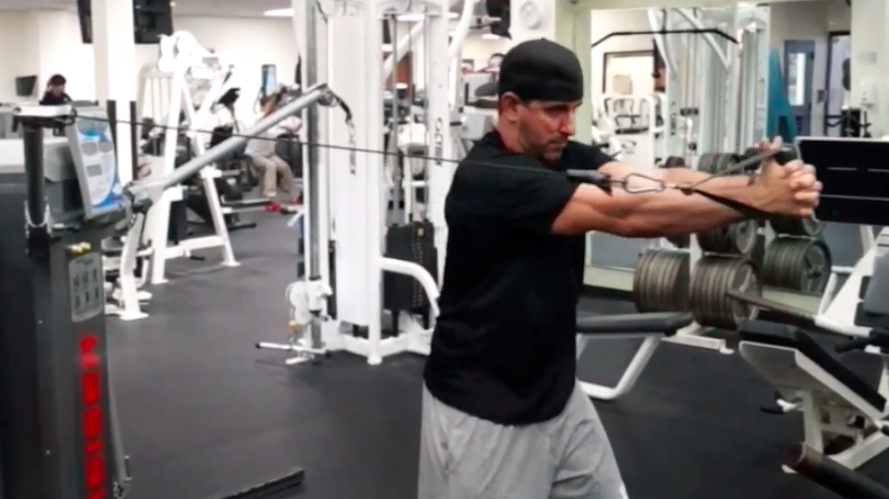
One of the most common ailments of people of all ages (athletes or the general
population) is low back pain. It is so common and causes so many issues that there
is an entire specialty (Chiropractic) that is dedicated to this condition. The reasons
is because of the severity of what could happen if low back pain continues without
treatment – pinched nerves, degenerative discs, arthritis, ruptured discs, etc.
Many of the most common treatments are – spinal adjustments, modalities,
increasing flexibility/mobility of the hips, strengthening, etc. Some of these can be
very expensive – in addition to the degree of uncertainty that may arise when trying
to choose a specialist that fits your situation.
In terms of treatment, some of the most basic and effective forms of correcting
dysfunction are ISOMETRIC STRENGTHENING. This goes well above and beyond
traditional strengthening of the trunk/spine (like crunches or planks). This can be a
very systematic approach to providing great stability across the various spinal levels
by ensuring that the muscles that attach to these levels are contracting properly.
In the pictures below, 4 key exercises will be demonstrated that strengthen the
muscles that are involved in the 4 key motions of the spine: FLEXION, EXTENSION,
LATERAL FLEXION, and ROTATION.
Usually low back pain and the onset of any type of condition in the trunk/spine
arises because the spine is inefficient at contracting muscles that are involved in one
or more of these motions. If one side is inefficient, the spine becomes unstable at
that level and many problems could arise. To combat this, it’s always a good idea to
train the motions from an isometric standpoint in every motion:
FLEXION
LATERAL FLEXION
ROTATION
Sets/Time: Depending on the severity of your pain and your fitness level – can be
2-5 sets of 15 to 60 second holds
Advanced: There are dozens of variation of these isometrics – standing, kneeling,
split stance, squat stance, performing these band exercises while lifting, etc.
Also, different band tension and/or different force angles (how high or low your
partner/trainer puts the band) will dictate the emphasis being placed on various
muscles.
The great thing about these exercises is that they can be done with bands – which
are inexpensive and don’t take up space. And, they can be done from anywhere,
even at home. To be very specific about the cause of your low back pain – getting
evaluated by a specialist can dictate which variations of these exercises should
be assigned along with a progressive plan that can really aid in the reduction of
common low back ailments – with a plan for the future to keep from reoccurring.
By: Pete Bommarito
By Pete Bommarito MS, CSCS, MATCS, USAW, MAT Jumpstart
11/11/14
We’ve been approached by countless people over the years with the same standard questions about fitness, training, and overall health. These questions get asked by everyone: people who train themselves but are advanced and experienced, beginners looking to get started, even high level athletes.
1. What is the best way to lose weight?
2. What is the best way to get toned?
3. What is the quickest way to get “in shape” for just general, overall good health?
There is countless ways to answer those questions. However, one specific answer that will relate to all of the above “common questions” – Power Endurance and Variety within the Power Endurance cycles.
Power Endurance
Strength can be easily understood by how much weight can you lift. Power is how fast you can lift a particular weight. Power endurance is how long can you sustain a particular level of power output. It has been proven in numerous scientific studies that Power Endurance intervals is the most efficient way to lose weight, get toned and increase our overall cardiovascular fitness.
For all you people that are timid of “lifting weights” or you just prefer alternative exercises: your body weight is a weight (hence, body weight exercises can be very effective if done properly); a resistance band is a weight; air resistance (like on the KEISER machine) is a weight. These types of weighted resistance can be very effective at providing good solid intervals for Power Endurance.
There are literally thousands of exercises that can be done for power endurance with body weight, air resistance, and bands. We are going to focus on three effective exercises that can be incorporated into any Power Endurance Circuit
Keiser High Rotation
Set a comfortable resistance, choose a power output level, and then try to maintain a certain percentage over time. All of this can be seen on the digital readout on the Keiser Machine.
From the start position, drive through the resistance in the rotation shown as fast as possible, return to the to the start position and repeat.
Time on: 30 seconds
Time rest: 30 seconds
Total sets: 10-20 (5-10 each side)
Band Low Row
Choose a resistance band that you can comfortably perform the low row action with maintaining good form and proper posture. Set the resistance level accordingly (how far you anchor the band to your body). From the start position (thumb down), quickly row the band towards your body rotating your thumb up. When the hand touches your rib cage, return to start position and repeat.
Time on: 10-30 seconds
Time rest: 30-60 seconds
Total sets: 10-20 (5-10 each arm)
Body Weight Explosive Step
Choose a box or bench height that you can safely perform the Step-Up action. From the start position, place your foot flat on the box (careful not to lift your heel), and then explosively step up onto the box/bench while driving your opposite knee up. Return to the start position and repeat. Alternate your arm action into the “running motion” as you perform the step up and return.
Time on: 30-60 seconds
Time rest: 30-60 seconds
Total sets: 10-20 (5-10 each leg)